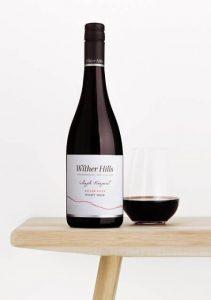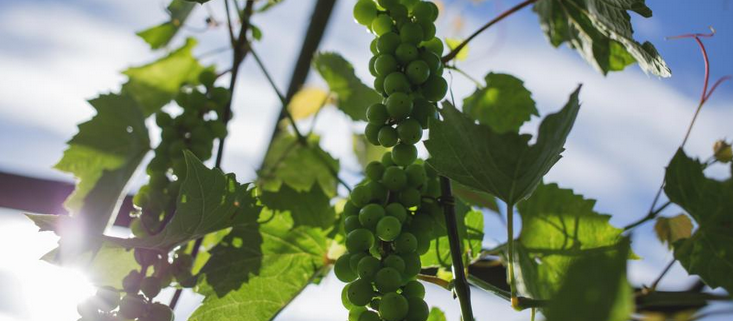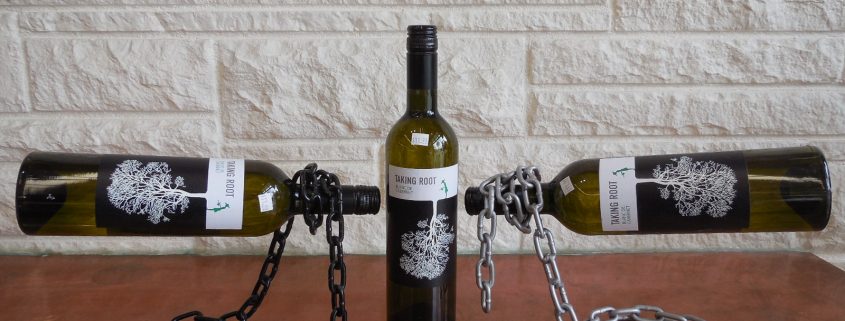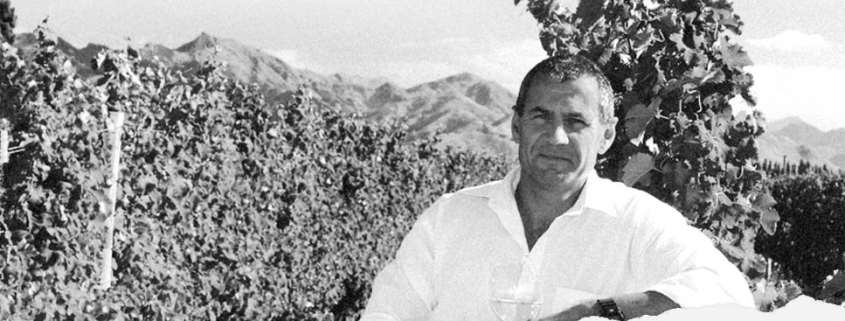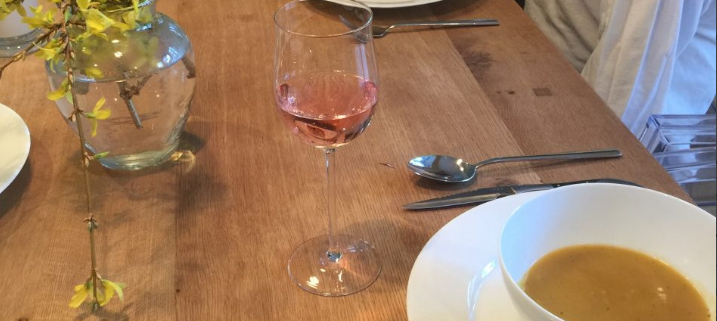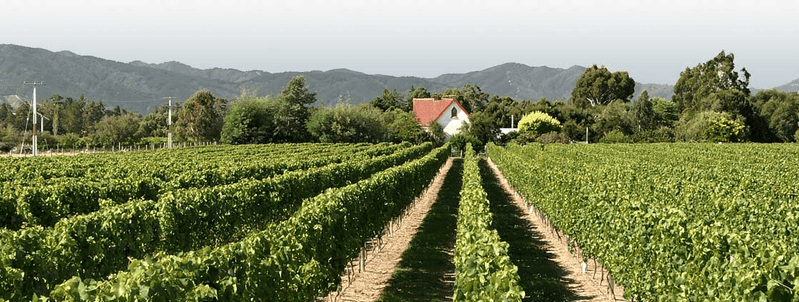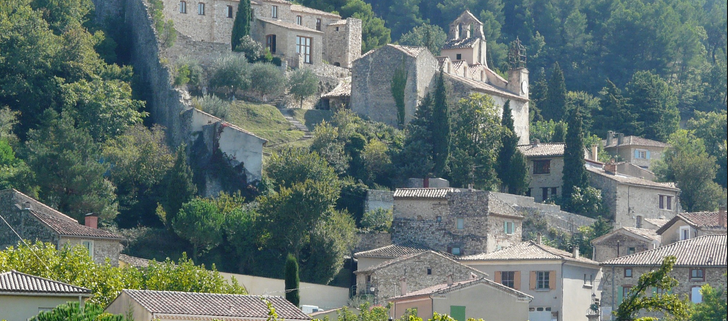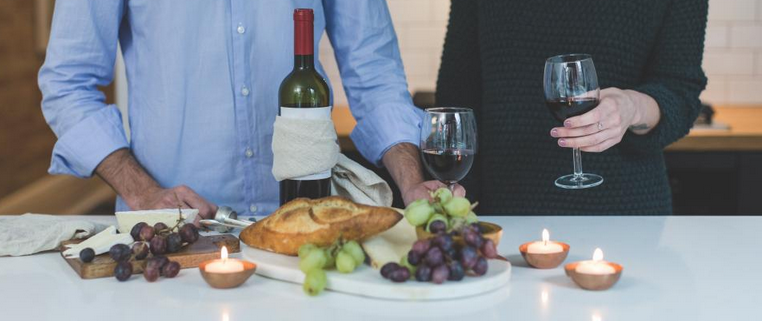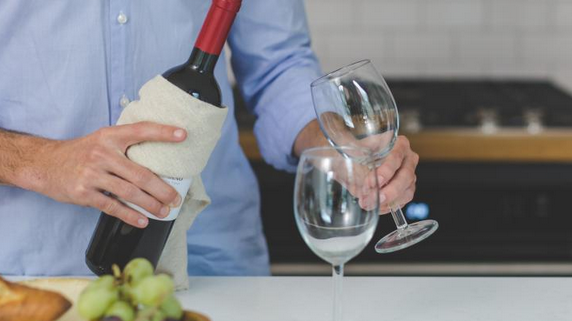Ok, so no matter how serious you are about drinking wine and learning all you can, sometimes you are seduced by the label. And the João Portugal Ramos Alvarinho 2015 label is seductive. The voluptuous bottle shape is shown to great advantage by the slanting, “off-the-shoulder” style of the label, very simple and elegant lettering with just that small showy glimpse of a golden “L” in the word Alvarinho. I just had to try it.
Alvarinho (pronounced Al-va-reen-yo) is the same grape as the Albariño grape found in Spain. And it is grown in a very similar environment or terroir – the cool Atlantic coast of the Iberian Peninsula. But the Portuguese version is a bit fuller and rounded with a lovely, rich mouthfeel with a bit of a sharp kick from its flinty, acid finish – every bit as seductive as the label.
 Portugal has long been overshadowed by its neighbor in wine production. Spain is quite simply a powerhouse when it comes to wine. Everyone has heard to Rioja and Ribera Del Duero, they know the Temperanillo grape and most have heard of Garnacha as well. Spanish Cava, their traditional method sparkling wine, is beginning to be highly prized and is starting to compete on quality with Champagne in a way that Prosecco never will. So, how is Portugal to fight back and carve out its own identity when so many of the wines are so similar? The solution has been to really concentrate in recent decades on quality. Portuguese wines used to be of marginal quality largely because it has a very large domestic market where people drink their local wines by the liter. But over time, it has been recognized that to compete on the global market, the wines have to be really good with consistent and high quality.
Portugal has long been overshadowed by its neighbor in wine production. Spain is quite simply a powerhouse when it comes to wine. Everyone has heard to Rioja and Ribera Del Duero, they know the Temperanillo grape and most have heard of Garnacha as well. Spanish Cava, their traditional method sparkling wine, is beginning to be highly prized and is starting to compete on quality with Champagne in a way that Prosecco never will. So, how is Portugal to fight back and carve out its own identity when so many of the wines are so similar? The solution has been to really concentrate in recent decades on quality. Portuguese wines used to be of marginal quality largely because it has a very large domestic market where people drink their local wines by the liter. But over time, it has been recognized that to compete on the global market, the wines have to be really good with consistent and high quality.
This producer understands this challenge and has been making wonderful wines in its very short lifespan (for a European winery). Established in 1990, João Portugal Ramos only began making this Alvarinho in 2013. And for a third iteration, this wine is excellent. It is very carefully made – fermented at low temperatures to preserve that beautiful varietal character of peaches and lemons with a slightly briny character. It is then made richer by partially fermenting it in new French oak to bring out that voluptuous quality I had mentioned before.
Posts
Moldova is a fascinating country. It sounds both very remote and yet very familiar to my ear – something about Transylvania and the Carpathian Mountains to the west, the Black Sea to the east. It seems to sit at a sinister juncture of fairytale and legend. But in reality, Moldova is a country covered by gently rolling hills that reach no higher than 1000 feet. There are lush valleys and rich pastures with a very temperate climate that is not too cold in the winter and not too hot in the summer and it gets just the right amount of rain for farming grapes.
In fact, Moldova has been growing grapes for millennia. There is evidence suggesting that the native Moldovans were making wine as early as 3000 B.C.E. There has been constant cultivation since that time, excepting the 300 years of Ottoman rule that destroyed many of their vineyards. Further damage was caused during both World Wars, decimating their wine stocks. However, in the post-war period, there has been a concerted effort to replant the wonderful hillsides with vines and bring production back to its former glory.
They have succeeded to a very great extent and replanted many indigenous varieties such as the difficult to pronounce “Feteasca Alba”, “Rarã Neagrã” and “Zghiharda.” They have also followed global trends and replanted the lands with more international varieties, including Cabernet Sauvignon, which seems to thrive almost everywhere, as well as Merlot, Pinot Noir, Riesling, Pinot Grigio and Chardonnay.
Until I tasted this remarkable wine, I couldn’t really predict what I would be tasting. I have had many, many red Cabernet Sauvignon wines and even had a few rosés, but I have never had a white wine made with it. This wine makes you appreciate just why Cabernet Sauvignon is indeed a superstar among grape varieties. My son would call it “o.p.” or overpowered. When it is gently pressed to preserve its fruit flavors and keep out the colors and polyphenols from the skins, it yields a white wine that has some beautiful aromas and flavors. Fresh and approachable, you smell grapefruit, herbs, perhaps some mango, pineapple and banana, and maybe just a hint of jalapeño. Then on the palate, you get creamy textures of summer fruit and with a mineral finish that is completely satisfying. Like most Cabernet’s, this is a full-bodied wine that is perfect with a range of flavors including shell fish, mature hard cheese, and charcuterie.
Thanks for reading,
Seema
So, when you hear that a wine expresses its “terroir,” what does that mean exactly? It means that you should be able to taste certain characteristics of its home if it is a well-made, carefully handled wine. That is the difference between a small-batch hand made wine and a mass produced wine, but more on that another time.
When you taste a wine, do you feel like it is balanced? Is there some sourness (“raciness” or “acid” or “mouthwatering crispness”)? Are there flavor characteristics that balance out the acidity? Fruit, floral aromas, minerals – which can often give wine a faint saltiness, herbaceousness? Is there any sweetness in the wine? Does it feel a bit hot on your palate in a way that you know you are drinking alcohol? Is that in balance with the other sensations or does it overwhelm the wine? Is the taste after swallow pleasant or do you detect a lingering bitterness? If so, is the bitterness a welcome sensation? And most importantly, does it please your palate?
Each of these questions potentially addresses a different aspect of terroir. If you detect acidity, it could very well be underripe grapes. But it could also indicate cool nights that enhance the development of acids in the grape, which is a desirable trait. If you taste some sugars, it could be that it is a low alcohol wine where the fermentation was stopped in order to preserve some sugar or it could mean that is made with grapes that received a great deal of warmth and sunlight and were able to ripen to a great degree. If you taste minerality, it could be that the wine was made in a cool climate using neutral vessels such as stainless steel or concrete or it could mean it was a coastal wine that somehow expresses the wet stones and salty breezes of its home. If the alcohol is well integrated, even at high levels, the wine will taste round rather than prickly. If you detect the alcohol level right away, you know it is unbalanced. So each aspect of a wine can have multiple explanations but you can learn a great deal about it from taking a minute to savor all the sensations and smells and tastes it imparts. And you can decide whether this wine has individual character and interest or if it is made to cater to the consistency of certain palates.
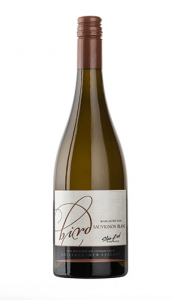
Cheers! Seema
Summer is the time of the year that I come alive. Having grown up in India, on a beach in Goa no less, I am still accustomed to sunny days and warm ocean breezes. Right now, I feel like a bear emerging from hibernation, as the crocuses finally pop up and the forsythia celebrate the changing season with bright yellow sprays of color.
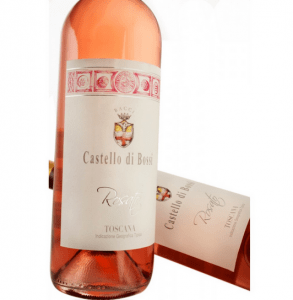
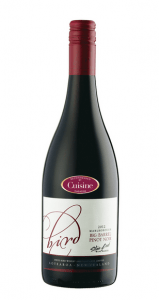
Bird Big Barrel Pinot Noir Tasting Notes: There is not much one can say about this wine without gushing. It is delicious. From the remarkable color to the nose full of delicately scented cherries and roses and baking spice and the taste of a very carefully and lovingly vinified Pinot Noir, it is to be savored. If handled improperly, Pinot Noir grapes will still yield a juicy wine, but it will lose all the uplifting aromatics. Therefore, this wine is made in the eponymous big barrels to keep the oak from overpowering the essence of the grape. The winemaker also uses an unusual “Vernou roll” technique that allows the wine to come into contact with the skins very gently and with limited exposure to oxygen, thereby preserving much of the flavor and intensity without extracting harsh tannins.
Pork or Veal Loin Glazed with Pomegranate and Oranges
- One 3-pound roast of pork or veal, or two 1 1/2 pound tenderloins
- Marinade
- 1/4 cup fresh orange juice
- Grated zest of one orange
- 2 tbsp soy sauce
- 2 tbsp peeled and grated fresh ginger
- 2 tbsp pomegranate syrup or pomegranate molasses
- 2 tbsp hot mustard
- 2 tsp freshly minced garlic
- Basting sauce
- 1/3 cup fresh orange juice
- 3 tbsp honey
- 3 tbsp pomegranate syrup or pomegranate molasses
- 2 tbsp soy sauce
- 2 tbsp reserved marinade
- To Make:
- In a large bowl, combine the ingredients for the marinade. Reserve 2 tablespoons. Then marinade the roast in a dish, covered by plastic wrap or a lid. Marinade for at least 6 hours, overnight if possible.
- Combine the ingredients for the basting sauce. Reserve 1/4 cup for spoon on at the very end.
- Broil or grill the roast or tenderloins not too close to the heat source, turning the meat and basting with the sauce at least 4 times. Cook until a meat thermometer registers 140 degrees Fahrenheit, 20 to 30 minutes for a large loin, 5 to 7 minutes per side for tenderloins.
- Or, in an oven, place in a roasting pan at 400 degrees. Baste every 5 minutes, until meat thermometer reads 140 degrees, about 40 minutes.
- Transfer meats to a carving board and let rest for 10 minutes. Slice thinly. Simmer reserved basting sauce until slightly thickened. Spoon over meat to glaze.
Gigondas is an appellation in the Southern Rhone region of France that is nestled in the valleys and foothills of the romantic sounding mountains, Dentelles de Montmirail. This area has a warm, mediterranean climate that ripens the constituent grapes in Gigondas to perfection. Grenache is a lovely, fruity grape whose vines are resistant to both heat and drought. They are often not trellised but rather “head trained” – allowed so stand on their own and are pruned to be close to the ground and provide shade to the bunches of grapes it produces. It ripens relatively late, but can develop enough sugars to push the alcohol levels it can produce to over 15%. And because it has thin skin, it can be relatively low in acids and tannins which makes it an ideal partner for the more forceful Syrah and Mourvedre varieties.
Wine made from Syrah is powerful – with dark berry flavors offset by notes of white and black pepper and relatively high tannins. It is more famous for its massive wines from Hermitage, Cote Rotie and under its alias, Shiraz, from Australia. But it is one of the most important parts of Southern Rhone blends – from Chateauneuf-du-Pape to Vacqueyras – as well as in Languedoc and Roussillon.
Mourvedre is made less as a single varietal because it can be very tannic and overwhelming – but in blends, it can be sublime. It is also known under the names Monastrell in Spain and as Mataro in Australia where it has thrived. It is also a heat loving, late ripening variety that brings a meaty, herby and potent character to wines.
Together, in a 50% Grenache, 40% Syrah and 10% Mourvedre blend, the 2013 Lavau Gigondas is a wonderful example of how these very different grapes work harmoniously together to create a big, rich, fruity, spicy wine that can stand up to anything you throw on the grill or any spices you might add. This wine has had 5 years in the bottle to meld its various parts, mellow out its rough edges and become downright luscious. It is filled with blackberry, black currant, peppery notes and licorice on the nose and is almost chocolate-like on the tongue. Having already finished one bottle, I am already anxiously planning when I can have more!
- White wines tend to show more oak because the wine itself tends to have more delicate flavors and fewer tannins. The oak itself has tannins that bind with the proteins in the wine, so whites do not become more tannic with oak fermentation or aging.
- Red wines on the other hand, already have tannins that have bound with the proteins in the wine. That means that non-neutral oak generally imparts more tannins to red wines than they have naturally. So, in addition to the vanilla / caramel / butterscotch types of flavors in American oak and the more coconut / hazelnut / smoky flavors in French oak, red wines tend to become more structured in oak barrels.
